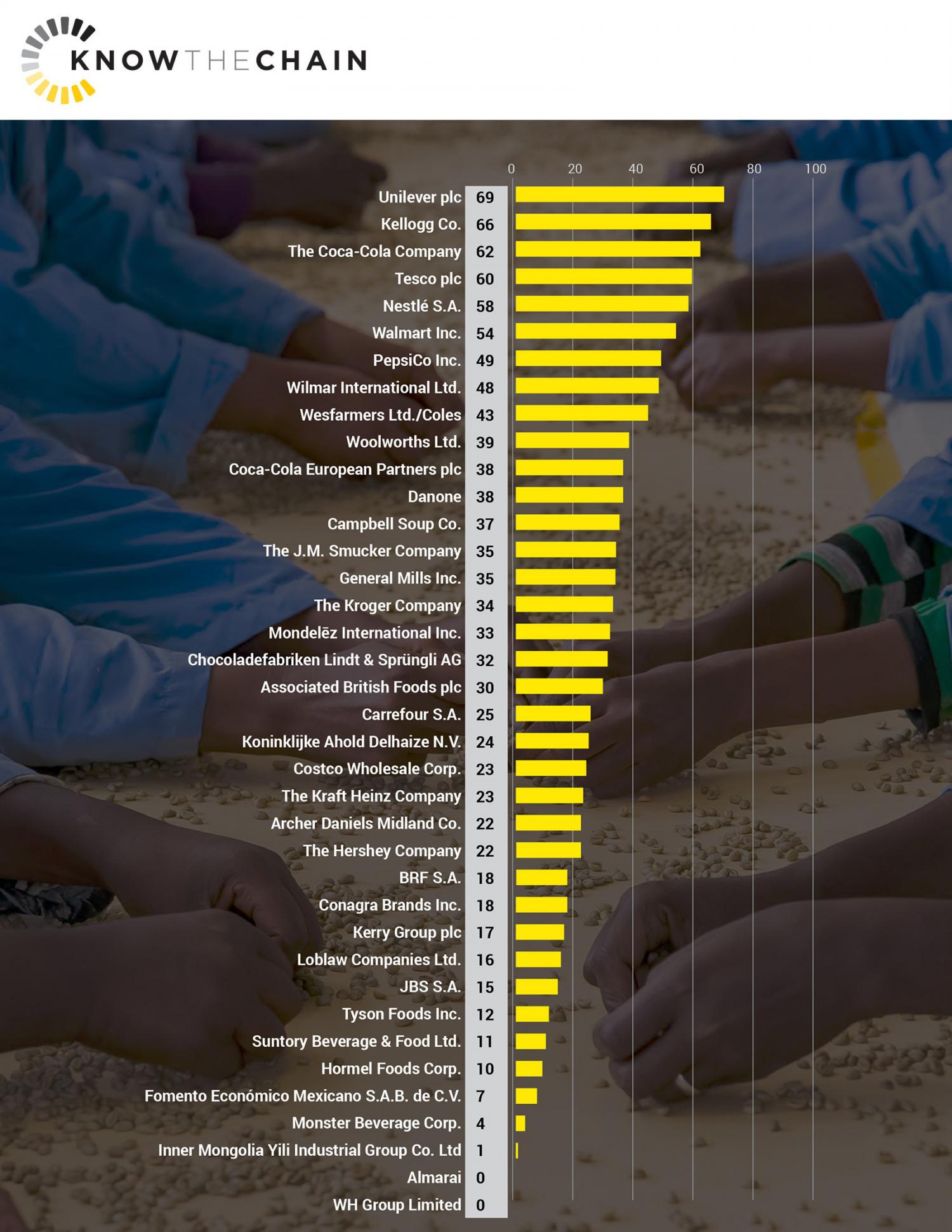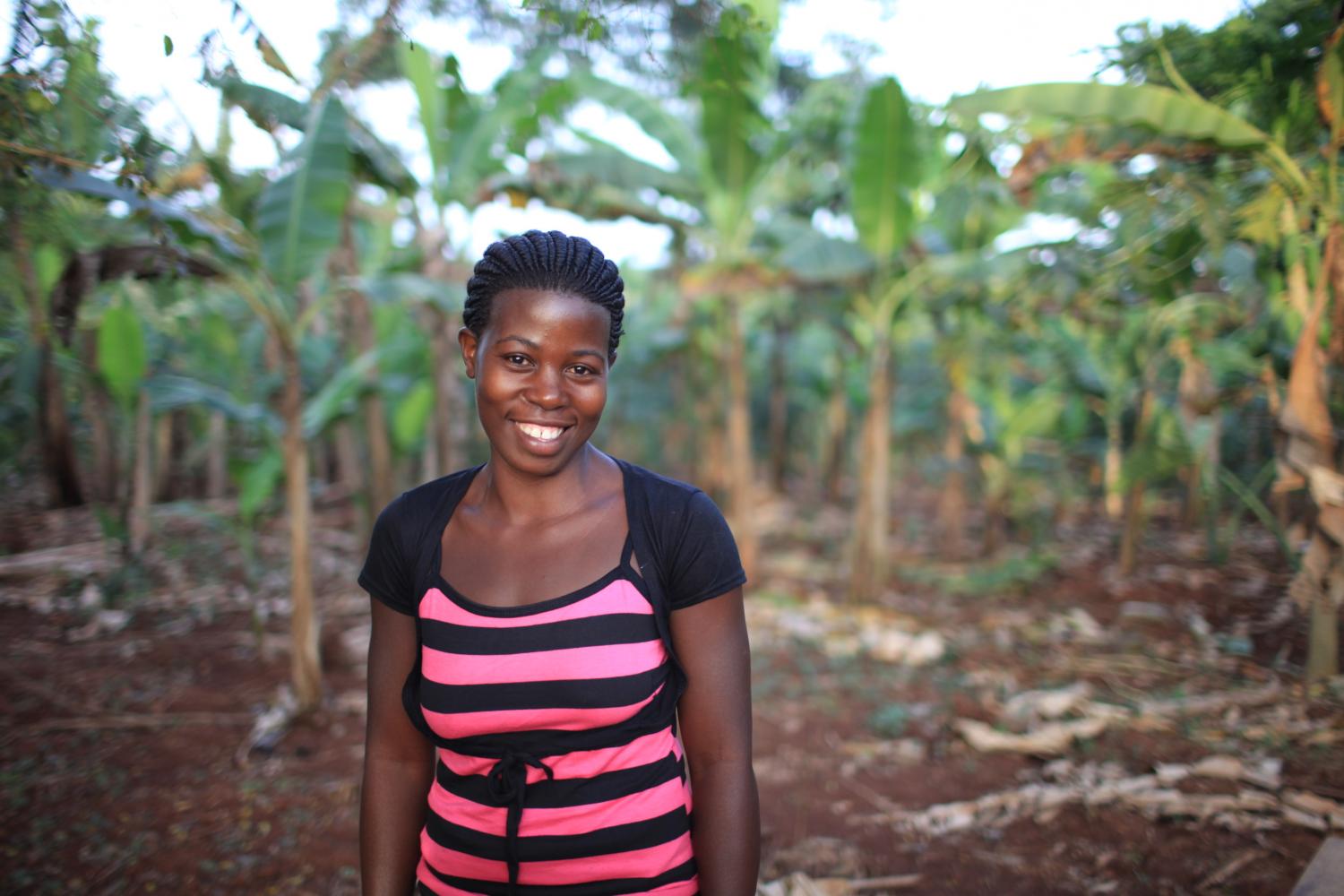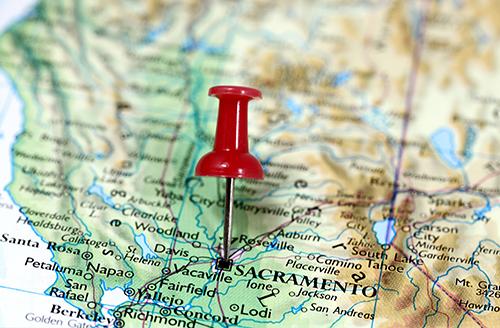Responsible Investing Survey Reveals Major Shift in ESG Thinking


Investors in the U.S. in general have been slower than their counterparts in Europe in taking environmental, social and governance (ESG) principles into account, but that resistance seems to be falling away.
According to the just-released third annual Responsible Investing Survey by RBC Global Asset Management, the percentage of U.S. institutional investors who reject ESG outright shrank to 34 percent from 51 percent in 2017. Further, 24 percent of U.S. investors now say that an ESG integrated portfolio will outperform a non-ESG portfolio, five times the number who agreed in 2017.
This echoes a global trend. For the first time, and by nearly every measure, institutional investors and consultants have shifted decisively from asking whether to adopt ESG principles, to looking at how to implement them.
ESG becomes mainstream
Globally, 90 percent of institutional investors believe ESG integrated portfolios are likely to perform as well or better than non-ESG integrated portfolios, and 72 percent are using ESG to make investment decisions. More than half say they consider ESG integration to be part of their fiduciary duty – double the percentage who said so last year.The remaining barriers to more widespread adoption of ESG are now logistical, versus philosophical, the survey found. Converting the remaining skeptics is more a question of adequate resources and access to quality information than philosophical opposition to the idea.
RBC GAM, which includes BlueBay Asset Management and manages more than USD$330 billion in assets, surveyed 542 institutional asset owners and investment consultants in the United States, Canada, Europe and Asia.
Respondents underscored the importance of gender diversity on corporate boards, with 42 percent of institutional investors supporting shareholder proposals as an effective means to achieve that goal. As TriplePundit noted in a recent article, more women are serving on boards but parity is a long way off. The push from investors may help the trend gain more momentum.
From exclusion to engagement
The survey shows that negative screens (often excluding “sin” stocks such as alcohol, tobacco and firearms companies) are evolving into an increased focus on engaging with companies as a way to influence corporate behavior.When asked in the context of the Fossil Fuel Free movement whether it was more effective to divest or engage, for example, 45 percent of the 2018 survey respondents said engagement is more effective (compared to 8 percent of respondents who prefer divestment).
Grasping the intangible
This growing embrace of ESG principles is not a matter of altruism. Investors are waking up to the fact that ESG risks can impact the worth of intangible assets, which make up more than 80 percent of company value, as the Society for Corporate Governance reported in June.These intangible assets include brand names, reputation, top managers, technological know-how and a loyal, well-trained and engaged workforce.
Investors lead the way
Regulation has been a driver in pushing European investors to adopt an ESG framework. In May, the European Commission unveiled its Action Plan on Sustainable Finance, a proposal which will introduce a regulatory framework supporting sustainable investment.In the absence of any such moves by U.S. regulators, it is investors who have been taking the lead in making ESG integration mainstream.
Institutional investors, boards of trustees, consultants and other members of the investment ecosystem increasingly appear to understand the value of ESG integration and are demanding that it be incorporated into the investment process.
Image credit: LIBER Europe/Flickr
Report: Food and Beverage Giants Not Doing Enough to Fight Forced Labor


International food and beverage giants are advancing their commitment to ending forced labor in their supply chains, but a new report from KnowTheChain states that all of the 38 companies analyzed (listed at the end of this story) still have a lot of room for improvement.
The report, KnowTheChain’s second food and beverage benchmark since it was launched in 2016, set out to answer one question: are the largest food and beverage companies in the world doing enough to eradicate forced labor from their supply chains?
While there have been substantial improvements made toward addressing forced labor since its last study, the answer is largely no, the companies are not doing enough. Companies are slow to improve issues with recruitment and engagement with workers across their supply chains; and they are limiting their impact by placing special focus in commodities where labor abuses receive the most media attention (as in palm oil), rather than casting a wider, all-encompassing net.
The report ranks firms on a scale from 0 to 100 and judges companies’ policies and processes against seven themes:
- Commitment and Governance – a company’s commitment to address forced labor
- Traceability and Risk Assessment – the extent to which a company demonstrates an understanding of its suppliers and workforce
- Purchasing Practices – the extent to which a company adopts responsible purchasing practices and integrates supply chain standards
- Recruitment – a company’s approach to reducing the risk of exploitation of supply chain workers by recruitment agencies
- Worker Voice – the extent to which a company engages with workers in its supply chain
- Monitoring – a company’s process for auditing suppliers
- Remedy – a company’s corrective action plan and a company’s ability to ensure remedy
The report considers a company average if it scores a 30 out of 100. An average company typically discloses a supplier code of conduct incorporating international standards prohibiting forced labor, a process for enforcing that code through many levels of its supply chain, employee training on forced labor, a grievance mechanism for its workers and an audit process to assess suppliers.
To improve its score, the report recommends that average-scoring companies provide training to suppliers on forced labor risks, create stronger recruitment monitoring mechanisms, support and empower workers to understand their rights and appropriately market and encourage the use of grievance mechanisms for workers.
While the average company score has improved slightly from 30 in 2016 to 33 in 2018, companies continue to score lowest in worker voice and recruitment, the two themes with the largest direct impact on workers’ lives.
Just 18 of the 38 companies analyzed have policies in place to prohibit worker-paid recruitment fees in their supply chain. None of the companies could provide evidence that workers were reimbursed for fees paid to a recruiter. On top of poor recruitment improvements, the study found that companies are demonstrating very little effort to engage with workers in their supply chain.
The study on workers rights is tackling an important and timely issue. The International Labour Organization (ILO) estimates that there are 24.9 million forced laborers in the world. The ILO identifies 11 indicators of forced labor:
- Abuse of vulnerability
- Deception
- Restriction of movement
- Isolation
- Physical and sexual violence
- Intimidation and threats
- Retention of identity documents
- Withholding of wages
- Debt bondage
- Abusive working and living conditions
- Excessive overtime
“Forced labor remains a major problem in the production of popular food and beverage products.” Kilian Moore, projector director for KnowTheChain, wrote in a press release. “It’s encouraging to see increased companies working to address forced labor… but progress for workers is not moving fast enough.”
Image credit: USDA
December 7: A Day of Dialogue to Take Collective Action on Workplace Inclusion


Last month, Botham Shem Jean (“Bo”), a 26-year-old young professional and native of St. Lucia who worked at PwC, was shot and killed in his Dallas home by an off-duty police officer.
The tragedy immediately launched an outpouring from Bo’s colleagues about what an extraordinary colleague and friend he was at PwC. Employees experienced the flow of countless emails, texts, and conversations from people not affiliated with the company who expressed their anguish over Bo’s tragic death.
There was also dismay in grasping how a tragedy like this could even happen in the first place: Bo was a young black man, and shot by a white police officer in his own apartment. In addition to the shock felt by many PwC employees, many of the company’s black professionals found themselves coping with their feelings of fear - ones which they live each and every day, and now, have become even present within their own homes.
For Tim Ryan, Bo’s shocking death has again pushed him to take even more action. After all, it was only two years ago when Ryan found himself having to start difficult conversations about diversity, inclusion and race.
In summer 2016, wIthin days after Ryan took the helm as CEO of PwC, Alton Sterling was shot in Baton Rouge, followed by a violent protest in Dallas during which five police officers were shot and killed. Shortly after that moment Ryan, in consultation with his team, decided PwC’s employees needed to have that difficult conversation about race.
Five days into his new job, Ryan sent a no-holds-barred company-wide email to PwC’s staff that aimed to break down barriers and start those difficult conversations about race in America. Hundreds of employees responded in kind with a wide range of opinions and emotions. One email to Ryan was particularly hit home: “When I came to work, the silence was deafening͛,” wrote an employee.
From those conversations, Ryan took the lead in creating the groundbreaking coalition, CEO Act!on for Diversity and Inclusion (CEO Action). Launched in June 2017, with the goal of inspiring 30 to 40 CEOs to sign up, CEO Action currently boasts over 500 CEOs and company presidents across 85 industries, as well as 40 educational institutions and associations committed to change how the business community addresses diversity and inclusion - and doing so by fostering workplace cultures where all ideas and perspectives are welcomed and encouraged.
Now, Bo’s death has led Ryan to push these conversations even further.
Over the past few weeks, PwC held more conversations about race across its offices. What these various talks were strongly in alignment with CEO Action’s original goals: bottom line, with increased dialogue, comes increased understanding.
The reality for many citizens is that day-to-day, plenty of challenges confront people of color, immigrants, LGBTQ and other groups often underrepresented across the U.S. workforce. CEO Action says it is determined to help others recognize that indeed, unconscious bias does exist and it is a barrier to continued progress and full equality.
The fact is that corporate leaders have the money, power and influence that can help create a far more equitable and fair society. To that end, CEO Action has presented two calls to action to the U.S. business community.
A collective day of dialogue on differences, December 7
On Friday, December 7, CEO Action is asking companies to have a discussion of understanding, across the U.S., on the same day. The goal of this “day of dialogue” is to embrace differences within organizations, educate employees and construct more inclusive cultures inside and outside of the office. “To put it simply, if we listen and understand each other better as human beings, we’ll do things differently,” said Ryan in an email sent to the signatories of CEO Action.
CEO Action realizes that kickstarting such conversations can be difficult. Therefore, the organization will offer companies with resources designed to facilitate such conversations at no cost to participating companies. Materials will include unconscious bias training materials, suggested best practices for facilitating difficult conversations on race and diversity, and even personal facilitators who will arbitrate such discussions. Companies interested in participating simply need to click here to have a representative of CEO Action reach out to discuss and launch the next steps.
Expanding CEO Action’s footprint into local communities
CEO Action has already launched the Check Your Blind Spots mobile tour, an interactive bus that intends to visit over 100 offices and universities while reaching 1 million people around the U.S. to deliver unconscious bias trainings. Now, the tour will visit even more communities across the U.S. This program’s goal is to not just to visit offices, but go where people live. According to CEO Action, the goal of this program is simple: to work with neighbors so that they understand that by being cognizant of bias, everyone can be part of the solution.
“We realize that both of these are significant actions - but if we are serious about moving the needle, we must be bold,” Ryan wrote, acknowledging that for many companies, this may be a heavy lift - but these conversations about race, diversity and equality are far more important to go unsaid.
PwC will be at 3BL Forum: Brands Taking Stands – The Long View to discuss CEO Action, and Tim Ryan is a finalist for CR Magazine’s Responsible CEO of the Year award. Winners will be announced at a dinner the evening of October 24.
Image credit: CEO Action
U.S. Companies Launch “Time to Vote” Campaign


With the U.S. 2018 midterm elections less than a month away, the major political parties have shifted into high gear, both sides energized by the recent controversial confirmation of Brett Kavanaugh to the U.S. Supreme Court. Media attention on this hotly contested election is only intensifying.
“I really do think the upcoming election in November is one of the most important in American history,” says Professor Francis Fukuyama of Stanford University, author of Identity: The Demand For Dignity And The Politics Of Resentment.
But the crux of the matter is: will American voters turn out? Skepticism is warranted. The U.S. has one of the lowest voter participation rates in the developed world, as low as 36 percent. Compare that to voter participation in Australia (93 percent) or Sweden (86 percent).
Giving workers time to vote
Now the corporate world has entered the fray. More than 150 companies including Kaiser Permanente, Levi Strauss & Co., Patagonia, PayPal, Tyson Foods and Walmart are supporting the Time to Vote campaign, a nonpartisan effort led by CEOs aimed at increasing voter participation.Why don’t more Americans vote? One of the most common reasons that people give for not voting is that they are too busy, or have work and life demands that prevent them from voting. We also can’t discount voters’ disillusionment with politicians and the political process. Can U.S. companies change their minds?
The organizers say companies can do a lot more to make it easier for their employees to vote. For instance, they can allow time for employees to vote by providing paid time off, a day without meetings, and resources for mail-in ballots and early voting. In fact, some 26 states already have laws on the books to give employees time off to vote. Here’s what some companies say they are doing:
- Patagonia is closing for business on Election Day so that any one of their U.S.-based employees can vote (the company first did this in 2016).
- Levi’s is giving corporate employees five hours to vote on Election Day, and retail employees will have three hours to vote.
- Walmart created a website with resources to help people get informed and to the polls.
- Lyft is offering ride discounts and giving free rides to the polls for people in “underserved communities” - the company is also partnering with the nonprofits Urban League and Voto Latino to decide what falls under this umbrella.
An underlying agenda?
Patagonia’s CEO Rose Marcario says, “The momentum around Time to Vote gives me hope for a future where business can act as a force for good. Together, we can remove barriers to civic participation and encourage all American workers to be citizens and voters first.”Yet civic duty alone is not the only driver of the Time To Vote campaign. As reported in Vox, the vast majority of names on the list of participants have previously expressed some kind of resistance to President Trump’s agenda. For instance, the CEOs of Gap, Eileen Fisher, Levi Strauss, and others participating in Time to Vote voiced opposition to Trump pulling the U.S. out of the Paris Climate Agreement last March.
Regardless of underlying motive, the effort is feeding into an electorate that is already fired up. A Pew polling showed 78 percent of Democrats and 75 percent of Republicans saying the election “really matters” and that the outcome is important to them. If voter turnout on Nov 6 manages to make a dent in the country’s voting apathy, corporate involvement in increasing voter turnout may well become a regular feature of the political landscape.
Image credit: Pixabay
Kiva Fosters New Partnerships to Boost Financial Inclusion via Blockchain Technology


Micro-lending veteran Kiva is continuing its quest to alleviate poverty by expanding its scope to address the global identity gap.
According to the World Bank, 1.7 billion people are unbanked, and of that total 1 billion of them do not have an official proof of identity. Without the ability to prove their identity, people cannot access basic services like having a mobile phone, enrolling in education or healthcare systems, or participating in local societies, economies and politics. Financial inclusion without discrimination has therefore been identified as a key enabler of the Sustainable Development Goals (SDGs), and registering everyone with a legal identity has become an important target for 2030.
Lack of formal identity, money, and trust for finance providers, along with the inability to verify any credit history, are the main barriers to financial inclusion. To address these issues Kiva has tied up with the UN Capital Development Fund and the UN Development Program to launch the Kiva Protocol, an initiative to help the unbanked get digital identities and protect their own credit information using blockchain technology. The program will enable the secure collection of data to help people access the financial services they need, be it for businesses, education or healthcare services.
As announced at the beginning of the 73rd UN General Assembly by Sierra Leone President Julius Maada Bio, the initiative will launch in Sierra Leone next year. The pilot will implement a nationwide digital identification system over the next three years to widen the country’s financial inclusion landscape. At the moment, 80 percent of the population in Sierra Leone is unbanked and the country only has one credit bureau that holds data of less than 1 percent of its population.
Kiva has been operational in Sierra Leone since 2007 and has distributed over $12 million in loans to its citizens. The organization's experience in the country over the last 11 years, alongside support from the government, was reason Kiva choose Sierra Leone as a starting point.
The Kiva Protocol system will help users receive, manage and repay micro loans issued by Kiva via mobile phone, or through a microfinance institution or field partner working in their community. The data accumulated on the system will be used to establish a credit score for participants. Information will be accessible both online and offline.
The digital identification system that the Kiva Protocol plans to use will be built on blockchain to give people secure and complete ownership of their personal data. No institution or government will be able to access the information without authorization from the owner. Blockchain is a decentralized digital database that can only be updated by consensus between all users, making it near impossible to hack; furthermore, KYC (know your customer) due diligence will need to be done only once, saving the program a tremendous amount of time and money.
Providing formal digital identities as a means to financial inclusion has advantages for both the public and private sector, including increased access to services, increased transparency and efficiency, and the prevention of fraud. Ultimately this could not only reduce poverty in a responsible and sustainable way, but also fuel rapid economic growth. According to a recent report by McKinsey Global Institute, digital finance alone could spur inclusive growth that adds $3.7 trillion to the GDP of emerging economies within a decade. This expansion of financial inclusion could create up to 95 million new jobs across all sectors of the economy.
Both governments and the private sector have a pivotal role to play in propelling financial inclusion for all, urging public-private partnerships to lead the way. Partnerships like that of the Kiva Protocol are catalysts for building a more inclusive society and "fintech" disruptions like blockchain are tools to facilitate it.
Image credit: Kiva. Images are provided by Kiva to advance its mission of connecting people around the world through lending to alleviate poverty.
The First State is First Again: Delaware is Leading on Corporate Sustainability


Delaware may only be 45th in population and 49th in size amongst U.S. states, but the First State is poised to become a global leader in sustainability.
One of the catalysts determined to position Delaware as a focal point for business sustainability is Melanie G. Smith. A retiring state legislator from Delaware, she's also the founder and president of Sustainable World Strategies, a consulting firm that helps organizations adopt sustainable strategies to add value to their organization. In recent years, she has focused on creating a framework that in the coming years will be known as the “Delaware Certificate” for transparency and sustainability.
The First State is the perfect place to lead on corporate sustainability. It is no secret that Delaware has long had more companies incorporate there than any other state (in fact, 1.3 million), due in a large part to the corporate law expertise at the state’s Court of Chancery and the fact that corporate case law is far more extensive in Delaware than any other state. Their courts are also well-known for their fast turnaround times, crucial if a company has to close an acquisition deal quickly. Furthermore, companies are also quick to incorporate in Delaware because of the state’s strong privacy protections. The bottom line for a company considering filing papers in Delaware is that by incorporating there, it sends a message to investors it is a national company.
“Delaware is a leader in supporting businesses through our corporate laws, and sustainability is about how they can adopt different strategies to make a difference in the world while improving their bottom line – so taking on this challenge was a no-brainer,” explained Smith.
Hence the light bulb began to blink above Smith’s head, as a few years ago, she began to explore an idea of a Delaware sustainability certification as a tactic that companies could adopt in order to signal to the market their commitment to responsible business.
The outcome was Delaware’s Voluntary Sustainable Certification legislation, signed into law by Delaware Governor John Carney on June 27, 2018. According to Harvard Law School, this act “represents Delaware’s initiative to support sustainability practices by providing Delaware-governed entities a platform for demonstrating their commitment to corporate and social responsibility and sustainability.”
Smith has also taken the lead in launching the Sustainable Delaware Commission. The commission includes the presidents of the state’s higher education institutions; the mayor of its largest city, Wilmington; the president of Delaware’s largest health care system; and the state Governor's key cabinet secretaries, including those that head the departments of transportation and environment; as well as the Secretary of State, its budget office, legislators and business leaders.
The goal is to make Delaware more sustainable by undertaking two strategies.
First, the commission seeks to review all of its operations, from the state’s fleet of vehicles, to its buildings, to Delaware’s 30,000 employees, its procurement dollars and pension investments. In addition, Smith envisions an infrastructure in Delaware that supports (and again, not to regulate) sustainability among Delaware’s various organizations, whether they are part of the the business community, nonprofit sector or local governments.
In the end, Smith sees a Delaware that is environmentally and socially responsible, and most importantly, economically sustainable.
“We could have a rich environment that’s built around sustainability, that could help attract more talent to Delaware. Currently we have researchers and entrepreneurs that come out of our universities that often think about leaving. But if we can convince them to stay we would stand to gain from having a strong economic development tool for our state.”
It’s quite the ambition for a state that for many of us, is only known as the one that became the first to ratify the U.S. Constitution on December 7, 1787. Now, Smith wants Delaware to be known as the First State in the 21st century for other reasons.
“If Delaware can get this right, we could become a laboratory for other states – and even for the world,” Smith said.
A full article about Melanie G. Smith's work will appear in the next edition of CR Magazine, to be released during 3BL Forum: Brands Taking Stands – The Long View October 23-25. Receive a 25% discount using this code PUNDIT2018VIP when you register here.
Image credit: J. Stephen Conn/Flickr
States Take Stands Like Brands


We are witnessing a new development in the Brands Taking Stands movement. States, led by California, are beginning to define themselves as “brands” by adopting definitive positions on social and political issues that are intertwined with business issues such as corporate governance.
Pioneering this new territory is California, which has just signed into law legislation that requires publicly traded companies headquartered in the state to have at least one woman on the boards by the end of next year. By 2021, companies with at least five directors would need to have two or three female directors, depending on the size of the board. Financial penalties would be assessed for non-compliance. Some 86 Californian companies in the Russell 3000 Index don’t have any women on their boards, such as Skechers, TiVo, and Stamps.com. Hundreds of other companies could be affected.
The new law lands on the female-deficient leadership of some big players in the state’s tech industry. Companies like Facebook and Alphabet/Google, will be required to add women directors to their boards. (On the other hand, some tech companies have taken a pro-active stance. Hewlett Packard, Apple, Cisco, Apple, Symantec, and Oracle have been called out for their leadership on board diversity.)
California’s law is being launched amid two strong, conflicting, socio-political currents: the deregulation policies of the current administration (the Department of Justice has said it will file suit against the new California law) and the national trend toward addressing gender inequality in many areas of civic society.
The legislation also comes at a time when market forces are pushing the issue. Influential investors such as BlackRock and State Street Global Advisors are threatening to withhold votes for companies with all male boards unless they diversify by adding female directors.
The question open for debate is, does this law mark a major correction in the historic gender imbalance on business boards or an unprecedented interference in the governance of corporations by a state government? A few other states—Illinois, Pennsylvania, Colorado, and Cailfornia’s East Coast progressive “twin,” Massachusetts—have issued non-binding resolutions to encourage companies to increase female representation on their boards, but California is alone in making law that sets a numerical formula for women board members.
Some opponents argue that the legislation is flawed because it claims to apply to companies based in the state, but perhaps chartered in another state such as Delaware, where many companies choose to incorporate due to its stringent privacy protections.
But values are driving changes in that state’s engagement with business, too. The Delaware Voluntary Sustainable Certification act, passed this summer, provides state governed entities “a platform for demonstrating their commitment to corporate and social gender diversity in the boardroom.” Unlike California’s law, the Delaware legislation calls for voluntary compliance. One large corporation cites a market-driven reason to sign up: DSM, the $10 billion Dutch multinational active in the fields of health, nutrition, and materials, describes the certification as “not just a point of differentiation, but genuine competitive advantage.” With thousands of companies chartered in Delaware, business as usual will be changing in that state, too.
Stay tuned for more states to engage with business on the gender equity-governance issue, whether by legislation, voluntary buy-in, or overt persuasion.
Editor's Note: the Delaware Certification’s effect will be discussed at 3BL Forum later this month.
How Businesses Can Be Environmentally Friendly and Still Make a Profit


Businesses don't have to compromise profitability for an eco-friendly restructuring of their current practices. More often than not, they benefit from the transition.
In a market where the carbon footprint of a conglomerate can tarnish its reputation, companies large and small should make a concerted effort to reduce their negative impact on the environment. They have a responsibility to the public to produce goods and services sustainably.
So where does an executive in upper management even begin? What changes can they make to their current procedures to ensure both the continued health of their company and the planet? In other words — what are cost-effective, sustainable solutions that won't be impossible to budget for?
In this article, we'll detail how a business can move toward environmental friendliness while not moving away from their goals.
Sustainable Procurement
For the manager who feels ensnared between environmental responsibilities and economic realities, sourcing is the most common issue. Fortunately, sustainable procurement is an option that's growing in both popularity and availability as prices fall. As an alternative to conventional sourcing, it has a significant impact.The products that an average business consumes, processes and discards as waste can accumulate at an alarming rate. Sustainable procurement allows managers to source their necessary supplies in a renewable way, using recycled materials and substances that aren't toxic to the environment.
Should a manager shop around, they'll likely find a supplier that provides the same goods they've grown accustomed to without a serious increase in price. The price is often lower, a result of the growing pressure of corporate accountability that urges manufacturers to replace outdated means of production.
Energy Restructuring
Shifting the energy infrastructure of an entire office building is an admittedly expensive task. It's time-consuming and labor-intensive, with noisy work crews disturbing the peace of an otherwise serene white-collar ecosystem. For many companies, that scale of restructuring simply isn't in the budget.But the benefits of renewable energy on large-scale operations are undeniable. EnergySage market data suggests that an average commercial property in the U.S. can save up to 75 percent by investing in solar power. The average monthly electric bill for a commercial property reduced from $1950 to $500 after the switch.
Still, the price of installation on a commercial property often represents a barrier to entry that's too steep for smaller businesses to afford. But with the steady increase in the popularity of alternative energy, business owners can expect a drop in price as the incentivized technology becomes more available.
Green Building
An executive asked to decide between constructing a building from conventional materials or green materials might flinch toward the former. The word "green" connotes "different," and anything that strays from the status quo is more often than not expensive — or at least, costlier than the standard.Fortunately for indecisive executives, sourcing eco-friendly companies to construct their building doesn't have to break the bank. It's a common misconception that green buildings are far more expensive to produce, but the rise in cost is marginal and easily supplemented by the eventual gains.
In sourcing safe concrete and renewable materials from the best providers available, savings accumulate for both power and water utilities. A business can operate their LEED-certified building at an almost 20 percent reduction in maintenance costs. Carbon emissions see a drastic cut, as well.
Embracing Eco-Innovation
A relatively new addition to the sustainable business leader’s vocabulary, eco-innovation is defined as an economic effort that operates with respect for the environment. It may seem like a synonym for "eco-friendly," but the term "eco-innovation" is far more complex with a greater depth and scope.Sustainable companies with a focus on eco-innovation receive more attention from potential investors interested in supporting a company that displays moral integrity and fair business practices. Having a strong voice in the conservation community can attract attention from wealthy contributors.
In addition to good publicity, companies that adopt eco-innovation change their policies to reflect their responsibility. They're able to avoid the costly consequences of environmental regulations and win the good favor of eco-conscious individuals. In short, it's a powerful way to rebrand and rebuild.
Replace Outdated Appliances
If the total conversion of a building's electrical infrastructure seems unrealistic, there are small ways that a manager can ensure that his or her office runs at peak efficiency. The solution is as simple as replacing the current appliances and light bulbs and replacing them with eco-friendly alternatives.A universally popular brand for both commercial and residential buildings, Energy Star is a trusted name in sustainability. In addition to the impressive energy efficiency of their models, each Energy Star appliance has a label that shows the user the amount of power the device will consume over time.
However, Energy Star appliances do tend to sell at a higher cost than their inefficient counterparts. But an office building's monthly savings in their electricity bill accumulate over time to make up for that initial cost. With patience, a small change now will yield a sizable result down the line
It Begins With a Single Step
Executives early in their journey toward sustainability should assess their office, crunching the numbers to note its efficiency in different areas. How much goes toward electricity, water and other necessities? Of these monthly expenses, how much unnecessary waste do the employees produce?By having an outline of the office's expenditure, a manager can research possible solutions with a clear perspective. But they should strike it from their mind that they're making an expensive sacrifice. Instead, they're making an investment not only in their business— but in the world.
The Pulse of Social Media Influencers in the Corporate World: A Roundtable Discussion


Among the dozens of speakers who represent a wide swath of Corporate America, you won't want to miss who will be at the Influencer Roundtable at 3BL Forum: Brands Taking Stands™ -- The Long View (October 23-25) featuring:
Anthony Shop: Chief Strategy Officer and Co-Founder, Social Driver
Social Driver runs in-house creative studios for social media, websites, video and brand design. Headquartered in Washington D.C., the firm is focused on partnership, creativity, stewardship, collaboration and service. As Chief Strategy Officer at Social Driver, Anthony Shop works with clients so they understand how digital and social technology can bring people together to achieve results.
Meredith Ferguson: Managing Director, DoSomething Strategic
As Managing Director of DoSomething Strategic, Meredith Ferguson ensures that the work delivered at DoSomething is thoughtful and impactful. Meredith’s career has spanned both client and agency roles, where she's led youth-focused engagement and business-driving strategies for national retail, health and restaurant brands. Meredith is an adjunct professor of Public Interest Marketing at Fordham University and is a Women@Forbes contributing columnist.
Rachael Siefert: Director, Digital Strategy, APCO Worldwide
Rachael Siefert, director and co-lead of APCO Worldwide’s North America digital strategy practice, has a decade of digital and social media experience. She is responsible for a variety of work, including leading and developing digital strategy, designing and leading digital research projects, managing the development and maintenance of websites and social media channels and managing content development across digital properties.
Leon Kaye: Executive Editor, TriplePundit, and the #1 Sustainability Media Influencer, OAnalytica
Leon Kaye has written for TriplePundit since 2010 and recently became 3p’s Executive Editor. He has advised on social media strategies for companies including Masdar, Abu Dhabi’s sustainability and renewable energy initiative. He’s a big advocate of social media, particularly of Instagram and Twitter, and is insistent social media can be an ally, from furthering one’s career to cementing trust with a company’s stakeholders.
Shonali Burke, Moderator: President & CEO, Shonali Burke Consulting
Shonali Burke switched gears to public relations almost two decades ago. An accredited business communicator, she’s on the adjunct faculty at The Johns Hopkins University, has been listed on PRWeek‘s inaugural top “40 Under 40”³ list of US-based public relations professionals, and was named one of “10 CEOs to follow on Twitter” by the Washington Business Journal.
On Thursday, October 25, these influencers will work with attendees to draw a roadmap on how to navigate social media and social networks to advance a company’s corporate responsibility reputation or protect its brand, while simultaneously seeking to engage or activate audiences. You identify the problem, and they will share unique solutions to these new rules of the road.
Register for 3BL Forum, the annual gathering of purpose-driven companies, October 23-25, at MGM National Harbor, with code INFLUENCE2018VIP and receive 25 percent off the event’s registration fee. In addition to this roundtable, the Forum’s agenda will include a Town Hall focused on this ongoing Brands Taking Stands movement. The venue is located just minutes away from Washington, D.C.
Image credits: Norwood Themes and Sara Kurfeß via Unsplash
Harnessing Mobile Technology to Train Supply Chain Workers


Dell has a large and dynamic supply chain, with supplier facilities located in many regions around the world and many suppliers involved at multiple tiers in the manufacturing process. We require all suppliers to comply with all applicable laws and recognized international standards, and also abide by the high social and environmental responsibility (SER) standards outlined in the Responsible Business Alliance Code of Conduct and Dell Supplier Principles.
We take a comprehensive approach to monitoring and improving suppliers’ performance through our risk assessments, audit process, corrective action plan management and capability-building programs. The size and complexity of our supply chain make capability building especially important. To drive lasting change in SER performance over time, we must help suppliers develop their own systems for preventing, managing and correcting issues.
We offer suppliers a variety of online and in-person trainings — on topics ranging from working hours to environmental management — that they can then cascade to their workers. Dell’s SER specialists in each region engage with suppliers to review audit findings, corrective action plans and root cause analyses, and help develop and deliver trainings to drive sustained performance. In FY18, supervisors and administrators at nearly 300 Dell supplier facilities completed our capability-building trainings.
To help suppliers scale their training efforts, we sponsored a health and safety training in April 2017 that is delivered directly to workers on their mobile phones. In just nine months, more than 88 percent of workers at 20 supplier facilities completed the training (35,000 workers total).
We decided to utilize a mobile training platform because our research revealed it can be difficult for suppliers to pull large groups of people off the manufacturing floor for training, yet most workers use mobile phones. Because mobile-based training is delivered directly to workers, suppliers don’t need to spend time sourcing and delivering classes on their own. This makes the training cost-effective for suppliers to access and easy for Dell to scale across many suppliers and workers worldwide.
We customized mobile-based trainings on health and safety, using suppliers’ and workers’ feedback to tailor the modules to meet their needs. The trainings use videos, animation and quizzes to create an engaging experience covering topics such as machine safety and emergency response.
We chose health and safety as our inaugural training topic because our biennial supplier audits revealed some nonconformance issues in this area. Dell’s benchmark survey of workers’ knowledge of health and safety topics also revealed some gaps. Health and safety issues affect workers directly, and we are committed to improving their well-being. Among the China-based suppliers participating in our mobile-based training pilot, we used the app WeChat to further educate and engage workers, regularly sending health-related articles and even sponsoring a video competition among workers to build excitement about using the platform.
Our initial surveys show the training improved workers’ scores on health and safety questions by up to 10 percent in one year, and suppliers say the trainings are fun, engaging and cost-saving.
“There is no doubt that this type of training, which uses smartphone as its tool, is more convenient and diverse compared with traditional training. The workers can get access to all kinds of information they want to know anytime and anywhere, and all they need is only a phone and network,” said Serena Xu, Compal’s assistant human resources director.
We are working to expand the mobile-based training to additional suppliers and to introduce new trainings on topics such as educating workers on their rights from onboarding to resignation. We will work with our suppliers and SER specialists to determine additional training topics based on feedback from workers and audit findings.
Previously posted on 3BL Media news.